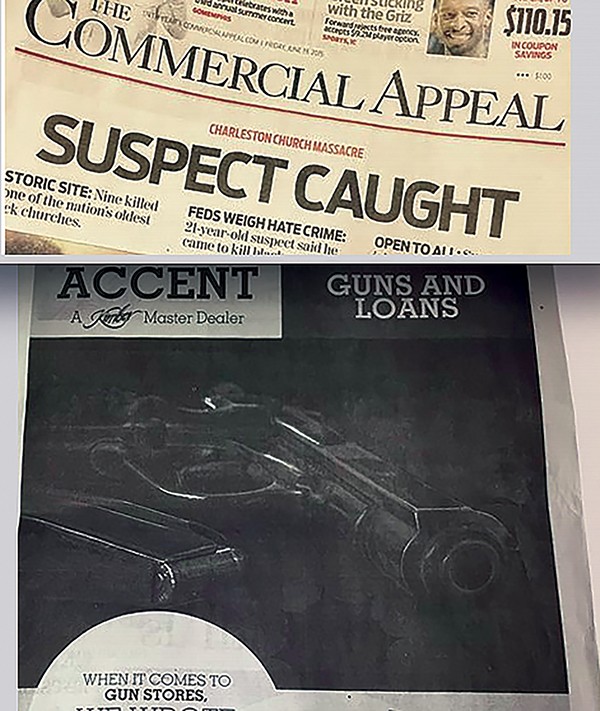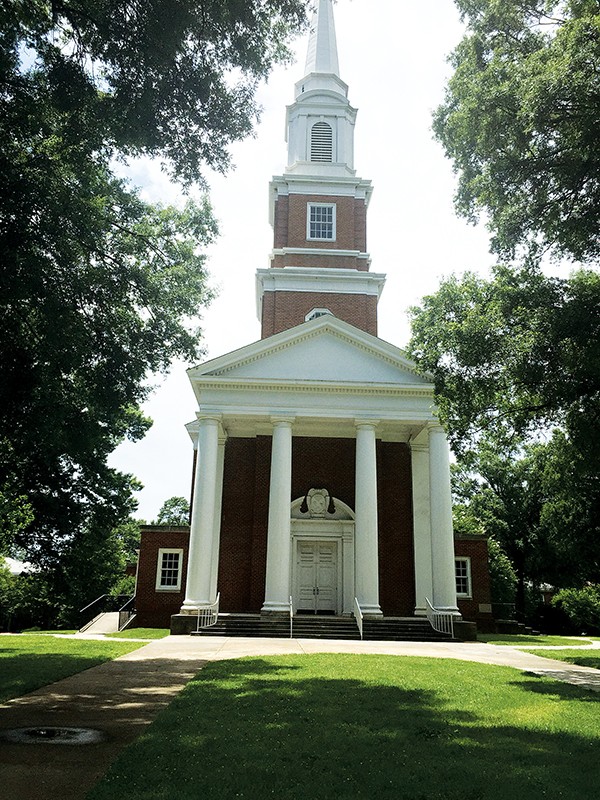Spurred on by the unspeakable tragedy in South Carolina, in which a white supremacist youth gunned down nine members of a Bible class at an historic African-American church, momentum has built rapidly in Tennessee, as elsewhere, for the suppression of the old Confederate battle flag and other symbols of the Confederate era.
Tennessee Democrats lost little time in endorsing the removal of Confederate emblems in both official and unofficial places, in and out of the state itself. State Representative Larry Miller issued a press release that not only called for official repudiation of the flag, but also suggested the National Football League (which maintains a team, the Tennessee Titans, in Nashville) should cancel its forthcoming season, restoring it only when the battle flag has undergone a thorough nationwide de-sanctioning.
Somewhat less ambitious efforts in the backlash against Confederate imagery seem to be gaining a measure of bipartisan support in the state. A call by Nashville Democratic congressman Jim Cooper and state House of Representatives Democratic leader Craig Fitzhugh of Ripley for the removal of a bust of Confederate general Nathan Bedford Forrest from the Tennessee statehouse was quickly endorsed by state Republican chairman Ryan Haynes.
Sentiment was also reported building to provide tree cover on I-65 outside Nashville to shield a monument to Forrest from the view of passing motorists.
“If I were a legislator, I would vote to move it,” said Haynes of the Forrest bust in the Capitol, seemingly shifting from an earlier position in which he denounced a statement by his counterpart, state Democratic chair Mary Mancini of Nashville comparing the Charleston crime to the 1940 assassination of West Tennessee NAACP leader Elbert Williams. Haynes said Mancini, specifically, and Democrats, in general, were guilty of “seeking to raise money off of a tragedy. … trying to profit from a horrific situation.” It was a claim based apparently on the fact that a link at the end of Mancini’s statement led to a web page that included a fund-raising appeal.
Mancini denied any attempt to associate party fund-raising with the issues she had raised.
Meanwhile, Mancini was scheduled to be in Memphis for several days in the latter part of this week. She will participate in a press conference/rally held by local Democrats on Thursday to call for another special session of the General Assembly to resurrect Republican Governor Bill Haslam‘s Insure Tennessee plan for Medicaid expansion under the Affordable Care Act (ACA).
That event, which will be held under the shadow of what is considered an imminent ruling by the U.S. Supreme Court that could further cripple the ACA, was set for 11 a.m. at the office of state Representative Antonio Parkinson, 5146 Stage Rd.. Co-chairs for the event were Mancini, Parkinson, and state Senator Sara Kyle of Memphis. Other local and area Democratic legislators were expected to participate, as well.
Haslam has indicated he has no plans to call another special session, following the failure of one he called in February on behalf of Insure Tennessee. He is expected to renew efforts on behalf of his Medicaid expansion plan during the 2016 session of the General Assembly, however.
Meanwhile, the Supreme Court is expected to rule soon on King v. Burwell, a suit brought by opponents of the ACA that seeks to invalidate the federal-run health care exchanges in states — mainly Southern and Republican-dominated — that have declined to establish state-run exchanges to administer the program.
Proponents of the ACA fear that success for the suit would cause the immediate dropping from insurance rolls of millions of people, including thousands in Tennessee, who have acquired health care coverage via the federal-run exchanges.
Backers of the suit base their claim for invalidation of the federal exchanges on the fact that the framers of the ACA mentioned state exchanges in the wording of the act but neglected to specifically authorize the federal government as a default operator of exchanges. Participants in the framing of the 2009 act have said that omission was a mere oversight.
Mancini will also appear in Memphis on Saturday as part of her statewide Tennessee Democratic Party Listening Tour. The event, scheduled for 10 a.m. at the IBEW union hall, 1870 Madison, is expected to draw Democrats from Shelby, Fayette, and Tipton counties.
• Ninth District Democratic congressman Steve Cohen of Memphis (who also has been assertive in demands for repudiation of Confederate symbols) found himself in a bit of local party cross fire last week, after the appearance on his Facebook page of a statement lavishly praising John Marek, campaign manager of his last two reelection efforts and a freshly announced candidate for the District 5 seat on the city council.
The Facebook statement was interpreted by some as an outright endorsement of Marek’s bid, but the congressman, noting that he has other friends in the District 5 race — specifically Mary Wilder and Charles “Chooch” Pickard, both, like Marek, with pledges of support from Memphians considering themselves progressives — attempted to counter that impression.
Appearing Saturday at a fish fry event for another council candidate, Paul Shaffer, who is running for the Super District 9, Position 2 seat, Cohen said his praise of Marek should not be regarded as an endorsement as such. “I may do something close to the [July 16th] filing deadline,” Cohen said, “but I’m not endorsing as of yet.”
Meanwhile, Wilder was the beneficiary of a campaign fund-raiser last week at the home of George and Nicole Treadwell; Pickard had one scheduled for Tuesday of this week at the Lincoln American Tower on North Main; and Marek has one set for this Saturday at Ciao Bella on Erin Drive.
• Mayoral candidate Jim Strickland will be the beneficiary of a meet-and-greet affair next Thursday by African-American supporters of his candidacy at the Zebra Lounge on Trimble Place. This fresh bid for backing among black voters is in the immediate aftermath of his endorsement earlier this month by long-time friend Sidney Chism, a political broker with roots in the African-American community.
In response to the Chism endorsement of Strickland, made at Chism’s annual political picnic, Mayor A C Wharton minimized both the endorsement and Strickland’s chances and expressed confidence in his own victory in remarks quoted by the Tri-State Defender.
• After a Shelby County Commission meeting on Monday that was one of the most stressful in the history of Shelby County government, the commission endorsed a budget plan favored by Republican County Mayor Mark Luttrell that would dispose of a $6 million surplus without gratifying a demand by a GOP minority on the commission for a one-cent decrease in the current county property tax rate of $4.37.
The absence on Monday of several key commissioners caused the tax rate vote to fall one vote short of the seven votes needed for final approval, but it seemed inevitable that the rate would be approved ultimately by the commission on a third and final reading.
A spirited resistance to both the tax rate and the provisional budget allocations was led by Republican Commissioners Heidi Shafer and Terry Roland, but a tacit alliance between the county administration and a predominantly Democratic coalition that included GOP member Steve Basar doomed that effort to failure.
Final approval of a budget resolution on second reading did not occur, however, until several hair-raising moments had occurred, including a temporary walkout by three Republicans and Democraic chairman Justin Ford (a de facto GOP ally) that threatened to cause the meeting the be aborted for lack of a quorum.
That outcome would have put to the test a warning from county financial officer Mike Swift that failure to resolve the budget issue on Monday might cause a shut-down of Shelby County government and a defaulting of employee paychecks. Swift’s statement was based on a ruling by County Attorney Ross Dyer.
Democrat Eddie Jones‘ late appearance restored a quorum, however, and the moment passed.
Democratic Commissioner Van Turner ultimately presented a successful budget resolution, reconciling versions proposed by Basar and the administration, omitting a tax decrease and raising the level of increases for several county divisions, notably one by the Sheriff’s Department that had been hotly disputed by Republican commissioners.


 Daseaford | Dreamstime.com
Daseaford | Dreamstime.com  Cole Wheeler
Cole Wheeler  Cole Wheeler
Cole Wheeler  Alaina Getzenberg
Alaina Getzenberg